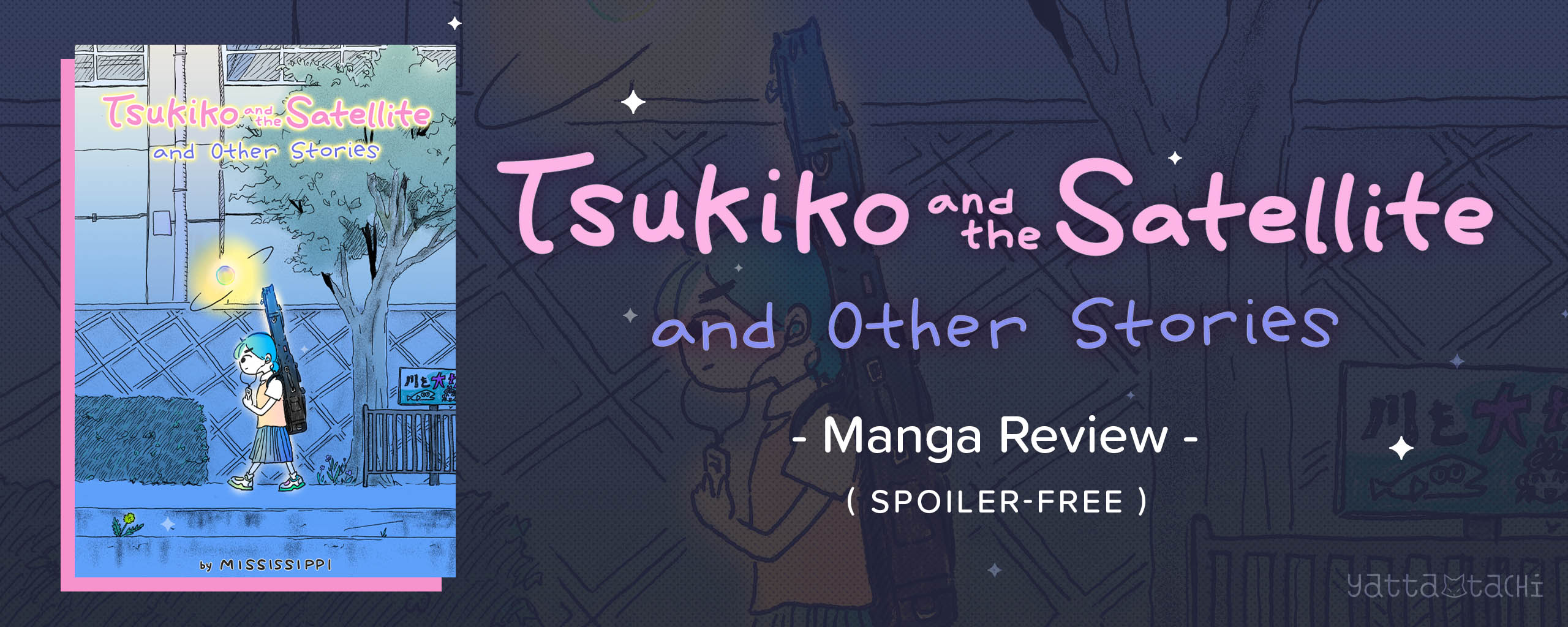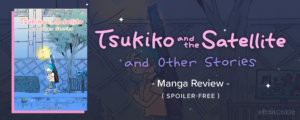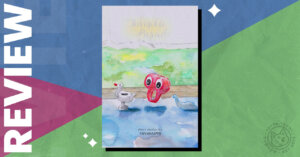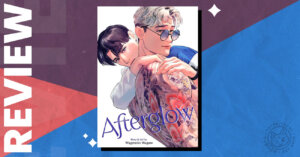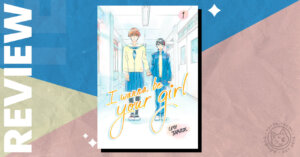Tsukiko and the Satellite and Other Stories is a short anthology manga collecting five stories by Mississippi, a painter and mangaka from Kyoto. The anthology is published by Glacier Bay Books, a very small publisher that works mostly with indie comics in translation. This of course includes manga, but they’re not strictly a manga publisher.
The Release Quality
Tsukiko and the Satellite is a pretty unique release in the English manga world, because as far as I can tell it was never released in this collected format in Japan. It’s not very often that we get anthologies or indie manga released over here at all, much less an exclusive one like this, so I was interested to read it regardless of whether the content turned out to be good or not.
Glacier Bay’s release has a detailed credits page that lists the translator (Anna Schnell) and cover text/sfx letterer (Tim Sun), as well as an afterword that has a few translation notes, the publication history of the individual stories, and some additional notes with interesting implications. All the stories are published in their original reading direction, but only the namesake story is read from right to left, like Japanese typically is. Anna Schnell is listed as the translator for only two of the stories. And Tim Sun is listed as only doing the lettering for the cover and sound effects, but obviously, there’s other lettering for dialogue and narration throughout. According to the afterword page, some of the shorts were first published in other comic anthologies and zines that appear to not be Japanese.
So it seems like most of these stories were originally published in English, or maybe that Mississippi did all the English lettering and translations themselves, which is pretty unheard of if it’s the case (Felipe Smith’s Peepo Choo is the only other example of a manga artist translating their own work that I can think of). It would explain the wildly varying quality of the lettering across each of these stories. Dialogue text mostly looks fine and conforms to normal comic lettering standards, but narration text is sometimes cramped or weirdly aligned. This could very well be an intentional choice on the part of the author, but either way, I found parts of it hard to read.
In terms of translation quality, I didn’t notice any clunky turns of phrase, and the chapters listed as translated don’t feel like they have a distinctly different voice from the others, so it’s a fine translation in my mind. There are no quality control issues like typos or layout problems. It’s a very well-done release overall.
The Content
All of the above said I’m not totally sure what to make of the whole thing. At first glance, the art looks kind of primitive. Characters’ designs aren’t very detailed or anatomically accurate and backgrounds are sparse. Clearly, most of Mississippi’s time and effort went to creating different textures with their art. I’m not an art media expert but it looks like pencils, ink, crayons, and watercolor all make appearances, and some objects and characters seem to have been glued or maybe even sewn onto the page before going to print. If they weren’t actually, then they’re at least drawn to look like it. If Mississippi is working mostly digitally, then some elements of the comic have definitely been created with analog methods and then scanned and pasted in. It all gives the simplistic, almost childish line work much more depth.
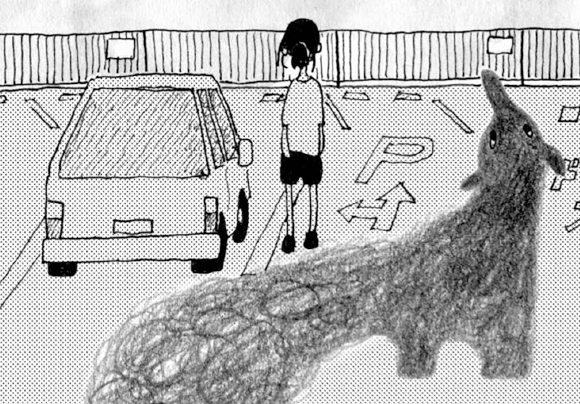
The actual stories being told were what I had the most trouble getting a bead on though. There’s no plot through-line or common theme connecting them. The only thing they all have in common is best described as their “vibe.” They mostly feel like essay comics from a near future parallel universe. Each one tells a story that would be mundane if it weren’t for the ghosts, robots, and Nessies that populate them. The only one that feels different is the titular Tsukiko story, which feels more like a children’s book, or maybe a kid recounting a dream than it does an essay. But it still has the futuristic everyday life setting.
My issue with them all is maybe that I wanted something out of them that I wasn’t going to get. The title story is just a cute, if strange, story. The rest of them seem to me to be surrealism for its own sake, without any real meat to chew on. There’s not much of a resolution or point to most of them. Maybe I’m just missing the point. Or maybe the point is that readers are supposed to miss the point, because they’re essays from an alien dimension we can’t comprehend. Or maybe the point is that the stories primarily exist as a vehicle for the art. Whatever the case may be, I didn’t really jive with it.
The Verdict
Tsukiko and the Satellite and Other Stories is a truly unique piece of art that still ultimately left me kind of cold. It’s visually striking and there’s nothing else much like it in the English language manga market, but I never could figure out what the stories were going for. I wanted to like it, and I did like a lot of things about it, but I don’t feel like I get it. That doesn’t mean it’s bad by any stretch, but it wasn’t quite my cup of tea.
Tsukiko and the Satellite and Other Stories is published by Glacier Bay Books.
Tsukiko and the Satellite and Other Stories credits:
- Original art and stories by Mississippi
- “Tsukiko and the Satellite” and “Audrey Hepburn 2049” translated by Anna Schnell
- Cover and SFX lettering by Tim Sun
Thanks to Glacier Bay Books for the opportunity to review this manga.
The Good
- Unique, high-quality release
- Visually striking mixed media art style
The Bad
- Might be a bit too strange for it's own good

Featured Sponsor - JAST
The sweetest romance and the darkest corruption, the biggest titles and the indie darlings; for visual novels and eroge, there's nowhere better.
Big thank you to our supporters
From their continous support, we are able to pay our team for their time and hard work on the site.
We have a Thank-You page dedicated to those who help us continue the work that we’ve been doing.
See our thank you page